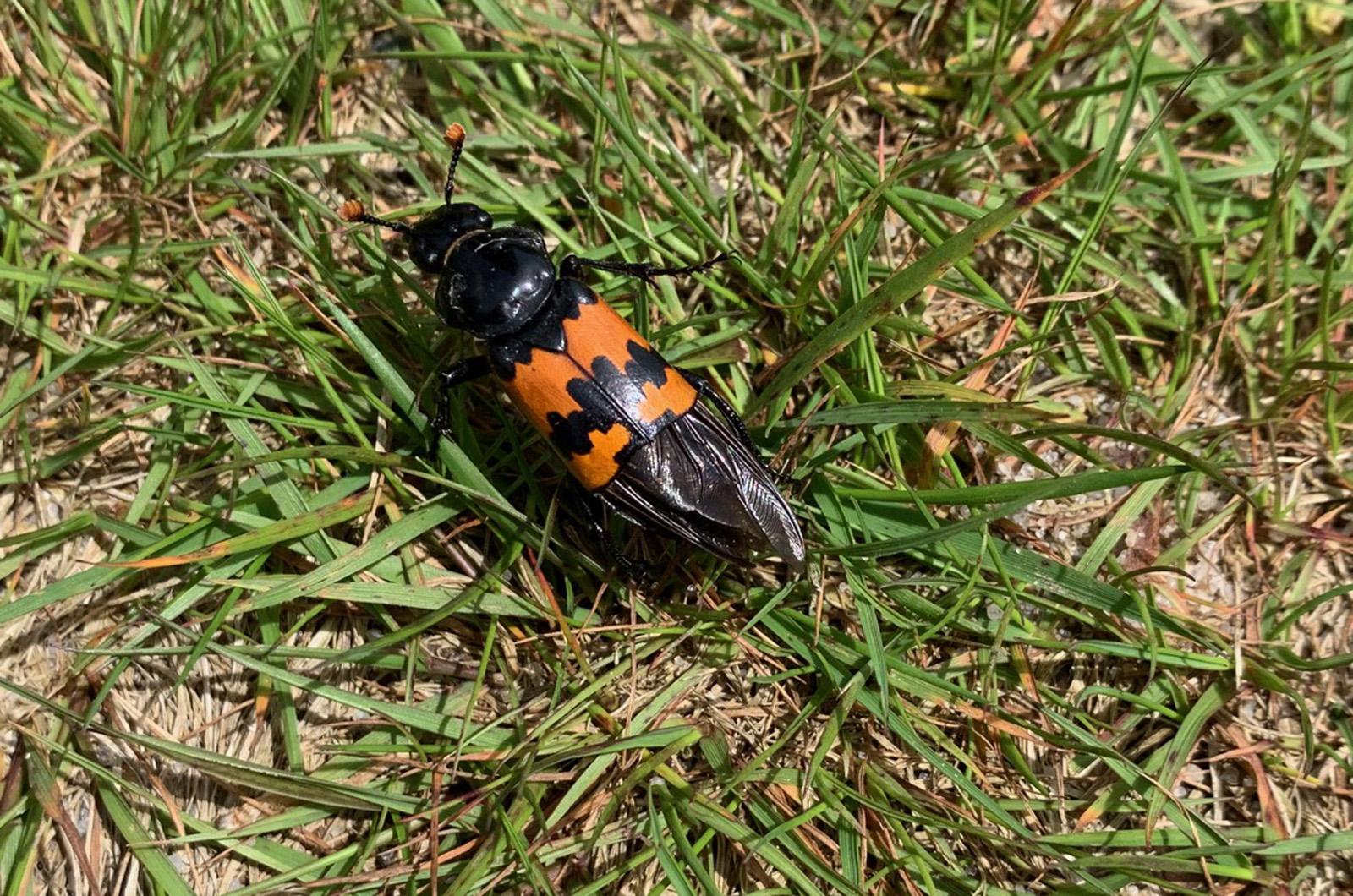Death is delicious if you are a carrion beetle.
Carrion beetles, such as the margined burying beetle I spotted at Felix Neck Wildlife Sanctuary last week, are notable for making a dinner of the deceased. These carrion beetles are a type of sexton beetle, so named for their habit of hanging around the carcasses of dead animals. Sextons are churchyard monitors whose responsibilities included gravedigging, so the name fits, though these sextons want to eat, not care for the dead.
Burying beetles are not killers, they only go after already dead prey. Using its antenna to “smell” death, the margined burying beetle finds a corpse, usually within an hour of its death, and awaits a mate to find it. Both are enticed by the dead’s scent (which also makes the beetles feel a bit sexy), as they are seduced by the smell into procreation atop their shared prize.
After the beetles mate, they bring the corpse to their burrow to hide it from other scavengers. With specially adapted legs and claws, these beetles can dig and bury their quarry up to eight inches deep. Once it is dragged in, the work of these insect undertakers begins.
First, they remove the hair and fur off of their future fare. Next, they coat it with chemicals that serve as antibacterials and fungicides to retard rot and stretch their meal. Finally, the body is ready for the next generation of feasters.
The female lays her eggs under the dead body, so the larvae that emerge will have a ready-to-go food supply. These young are not able to feed themselves and rely on both parents who, showing a high level of parental care, will pick on the rotting prey and feed the young like a bird feeds her chicks.
Though the margined burying beetles are small, less than an inch, they surprisingly succeed in moving a creature much larger than themselves. Their prey can include mice, moles, birds and other rodents.
These beetles are not alone in their quest for fatality food. They have a body buddy that travels, eats and lives with them. On many beetles, smaller red mites attach to their abdomen and hitchhike. Eventually they dine with the beetles, though preferring a different entree.
The mite/beetle relationship is mutually beneficial. The beetles carry the mites to their shared food resource and the mites, which prefer consuming fly eggs on the carcass more than the carcass itself, remove an important food competitor: fly maggots. If the mites are not present, the fly and its larvae can overtake the carcass and the maggoty mess will eventually be abandoned by the burying beetles.
While all of this might sound unappetizing, the works of beetles and other decomposers are some of the most important activities happening just out of sight. Notable entomologist J. Henri Fabre knew that to be the truth. He rightly observed that carrion beetles make “a clearance of death on behalf of life.”
Suzan Bellincampi is director of the Felix Neck Wildlife Sanctuary in Edgartown, and author of Martha’s Vineyard: A Field Guide to Island Nature and The Nature of Martha’s Vineyard.




Comments
Comment policy »